Contactless Localization of Premature Laminar–Turbulent Flow Transitions on Wind Turbine Rotor Blades in Operation
Abstract
Featured Application
Abstract
1. Introduction
1.1. Motivation
1.2. State of the Art
1.3. Aim and Outline
2. Measurement Approach
2.1. Actual Flow Transition
2.1.1. Method A: No Image Rotation and 2D Gradient Evaluation
2.1.2. Method B: Image Rotation and 1D Gradient Evaluation
2.2. Natural Flow Transition
2.3. Parameter Definition to Quantify the Laminar Flow Reduction (LFR)
3. Experimental Setup
3.1. Image Acquisition
3.2. Implementation
- Pre-evaluation of the thermographic image
- Obtaining all local gradient maxima positions representing the natural and premature flow transition
- Selection of all gradient maxima with plausibility and outliers analysis
- Creating a final actual and natural flow transition line from the selected gradient maxima
- Calculation of the laminar flow reduction (LFR)
- 1.
- Pre-Evaluation
- 2.
- Obtaining Positions of Local Gradient Maxima
3.2.1. Method A: No Image Rotation and 2D Gradient Evaluation
3.2.2. Method B: Image Rotation and 1D Gradient Evaluation
- 3.
- Selection of Local Gradient Maxima
- 4.
- Acquiring Flow Transition Line
- 5.
- Calculation of the Laminar Flow Reduction (LFR)
4. Results
4.1. Verification
4.1.1. Simulation
4.1.2. Contrast of Turbulence Wedge
4.1.3. Image Noise
4.1.4. Overlapping of Turbulence Wedges
4.2. Validation
4.2.1. Flow Transition Line
4.2.2. Laminar Flow Reduction
5. Conclusions and Outlook
Author Contributions
Funding
Conflicts of Interest
Abbreviations
| CNR | contrast to noise ratio |
| IFOV | instantaneous field of view |
| LFR | laminar flow reduction |
| method A | image processing with no image rotation and 2D gradient evaluation |
| method B | image processing with image rotation and 1D gradient evaluation |
| NETD | noise equivalent temperature difference |
| rotation angle in degrees | |
| gradient direction in degrees | |
| relative contrast of turbulence wedge in % | |
| contrast to noise ratio between area a and b in arbitrary units | |
| gradient threshold for premature flow transitions without unit | |
| gradient threshold for natural flow transitions without unit | |
| collection of premature flow transitions in pixels | |
| collection of natural flow transitions in pixels | |
| G | gradient magnitude without unit |
| gradient magnitude in direction without unit | |
| counting variable without unit | |
| mean intensity without unit | |
| relative laminar flow reduction in image column i in arbitrary units | |
| relative laminar flow reduction in arbitrary units | |
| standard deviation without unit | |
| temperature profile of image column j without unit | |
| image coordinates in pixels | |
| rotated image coordinates in pixels | |
| actual transition position in image column i in pixels | |
| natural transition position in image column i in pixels | |
| rotor blade leading edge position in image column i in pixels | |
| rotor blade trailing edge position in image column i in pixels | |
| y-coordinates of actual flow transition line in pixels | |
| y-coordinates of natural flow transition line in pixels |
References
- Schlichting, H. Boundary-Layer Theory; McGraw-Hill: Braunschweig, Germany, 1979. [Google Scholar]
- Corten, G.P.; Veldkamp, H.F. Insects can halve wind-turbine power. Nature 2001, 412, 41. [Google Scholar] [CrossRef] [PubMed]
- Dalili, N.; Edrisy, A.; Carriveau, R. A review of surface engineering issues critical to wind turbine performance. Renew. Sustain. Energy Rev. 2009, 13, 428–438. [Google Scholar] [CrossRef]
- Keegan, M.H.; Nash, D.H.; Stack, M.M. On erosion issues associated with the leading edge of wind turbine blades. J. Phys. Appl. Phys. 2013, 46, 383001. [Google Scholar] [CrossRef]
- Slot, H.M.; Gelinck, E.R.M.; Rentrop, C.; van der Heide, E. Leading edge erosion of coated wind turbine blades: Review of coating life models. Renew. Energy 2015, 80, 837–848. [Google Scholar] [CrossRef]
- Gaudern, N. A practical study of the aerodynamic impact of wind turbine blade leading edge erosion. J. Phys. Conf. Ser. 2014, 524, 012031. [Google Scholar] [CrossRef]
- Sagol, E.; Reggio, M.; Ilinca, A. Issues concerning roughness on wind turbine blades. Renew. Sustain. Energy Rev. 2013, 23, 514–525. [Google Scholar] [CrossRef]
- Kuester, M.S.; Brown, K.; Meyers, T.; Intaratep, N.; Borgoltz, A.; Devenport, W.J. Wind Tunnel Testing of Airfoils for Wind Turbine Applications. Wind. Eng. 2015, 39, 651–660. [Google Scholar] [CrossRef]
- Dollinger, C.; Balaresque, N.; Sorg, M.; Goch, G. Thermographic measurement method for turbulence boundary layer analysis on wind turbine airfoils. In Proceedings of the Wind Power Conference and Exhibition, Las Vegas, NV, USA, 7–8 October 2014. [Google Scholar]
- Ehrmann, R.S.; White, E.B.; Maniaci, D.C.; Chow, R.; Langel, C.M.; van Dam, C.P. Realistic Leading-Edge Roughness Effects on Airfoil Performance. Am. Inst. Aeronaut. Astronaut. 2013. [Google Scholar] [CrossRef]
- Sareen, A.; Sapre, C.A.; Selig, M.S. Effects of leading edge erosion on wind turbine blade performance. Wind Energy 2014, 17, 1531–1542. [Google Scholar] [CrossRef]
- Han, W.; Kim, J.; Kim, B. Effects of contamination and erosion at the leading edge of blade tip airfoils on the annual energy production of wind turbines. Renew. Energy 2018, 115, 817–823. [Google Scholar] [CrossRef]
- Zidane, I.F.; Saqr, K.M.; Swadener, G.; Ma, X.; Shehadeh, M.F. On the role of surface roughness in the aerodynamic performance and energy conversion of horizontal wind turbine blades: A review. Int. J. Energy Res. 2016, 40, 2054–2077. [Google Scholar] [CrossRef]
- Schaffarczyk, A.P.; Schwab, D.; Breuer, M. Experimental detection of laminar-turbulent transition on a rotating wind turbine blade in the free atmosphere. Wind Energy 2016, 20, 211–220. [Google Scholar] [CrossRef]
- Eggleston, D.M.; Starcher, K. A Comparative Study of the Aerodynamics of Several Wind Turbines Using Flow Visualization. J. Sol. Energy Eng. 1990, 112, 301–309. [Google Scholar] [CrossRef]
- Swytink-Binnema, N.; Johnson, D.A. Digital tuft analysis of stall on operational wind turbines. Wind Energy 2016, 19, 703–715. [Google Scholar] [CrossRef]
- De Luca, L.; Carlomagno, G.M.; Buresti, G. Boundary layer diagnostics by means of an infrared scanning radiometer. Exp. Fluids 1990, 9, 121–128. [Google Scholar] [CrossRef]
- Gartenberg, E.; Roberts, A.S. Airfoil transition and separation studies using an infrared imaging system. J. Aircr. 1991, 28, 225–230. [Google Scholar] [CrossRef]
- Gleichauf, D.; Dollinger, C.; Balaresque, N.; Gardner, A.D.; Sorg, M.; Fischer, A. Thermographic flow visualization by means of non-negative matrix factorization. Int. J. Heat Fluid Flow 2020, 82, 108528. [Google Scholar] [CrossRef]
- Joseph, L.A.; Borgoltz, A.; Devenport, W. Infrared thermography for detection of laminar-turbulent transition in low-speed wind tunnel testing. Exp. Fluids 2016, 57, 77. [Google Scholar] [CrossRef]
- Gartenberg, E.; Roberts, A.S. Twenty-five years of aerodynamic research with infrared imaging. J. Aircr. 1992, 29, 161–171. [Google Scholar] [CrossRef]
- Montelpare, S.; Ricci, R. A thermographic method to evaluate the local boundary layer separation phenomena on aerodynamic bodies operating at low Reynolds number. Int. J. Therm. Sci. 2004, 43, 315–329. [Google Scholar] [CrossRef]
- Dollinger, C.; Balaresque, N.; Sorg, M.; Fischer, A. IR thermographic visualization of flow separation in applications with low thermal contrast. Infrared Phys. Technol. 2018, 88, 254–264. [Google Scholar] [CrossRef]
- Traphan, D.; Herráez, I.; Meinlschmidt, P.; Schlüter, F.; Peinke, J.; Gülker, G. Remote surface damage detection on rotor blades of operating wind turbines by means of infrared thermography. Wind Energy Sci. Discuss. 2018, 3, 629–650. [Google Scholar] [CrossRef]
- Ye, Q.; Avallone, F.; Ragni, D.; Choudhari, M.M.; Casalino, D. Effect of Surface Roughness on Boundary Layer Transition and Far Field Noise. In Proceedings of the 25th AIAA/CEAS Aeroacoustics Conference, Delft, The Netherlands, 20–23 May 2019; Volume 2019. [Google Scholar] [CrossRef]
- Dollinger, C. Thermografische Strömungsvisualiserung an Rotorblättern Von Windenergieanlagen. Ph.D. Thesis, Universität Bremen, Bremen, Germany, 2018. [Google Scholar]
- Dollinger, C.; Balaresque, N.; Gaudern, N.; Gleichauf, D.; Sorg, M.; Fischer, A. IR thermographic flow visualization for the quantification of boundary layer flow disturbances due to the leading edge condition. Renew. Energy 2019, 138, 709–721. [Google Scholar] [CrossRef]
- Dollinger, C.; Sorg, M.; Balaresque, N.; Fischer, A. Measurement uncertainty of IR thermographic flow visualization measurements for transition detection on wind turbines in operation. Exp. Therm. Fluid Sci. 2018, 97, 279–289. [Google Scholar] [CrossRef]
- Bertalmio, M.; Bertozzi, A.L.; Sapiro, G. Navier-Stokes, Fluid Dynamics, and Image and Video Inpainting. In Proceedings of the 2001 IEEE Computer Society Conference on Computer Vision and Pattern Recognition, Kauai, HI, USA, 8–14 December 2001. [Google Scholar]
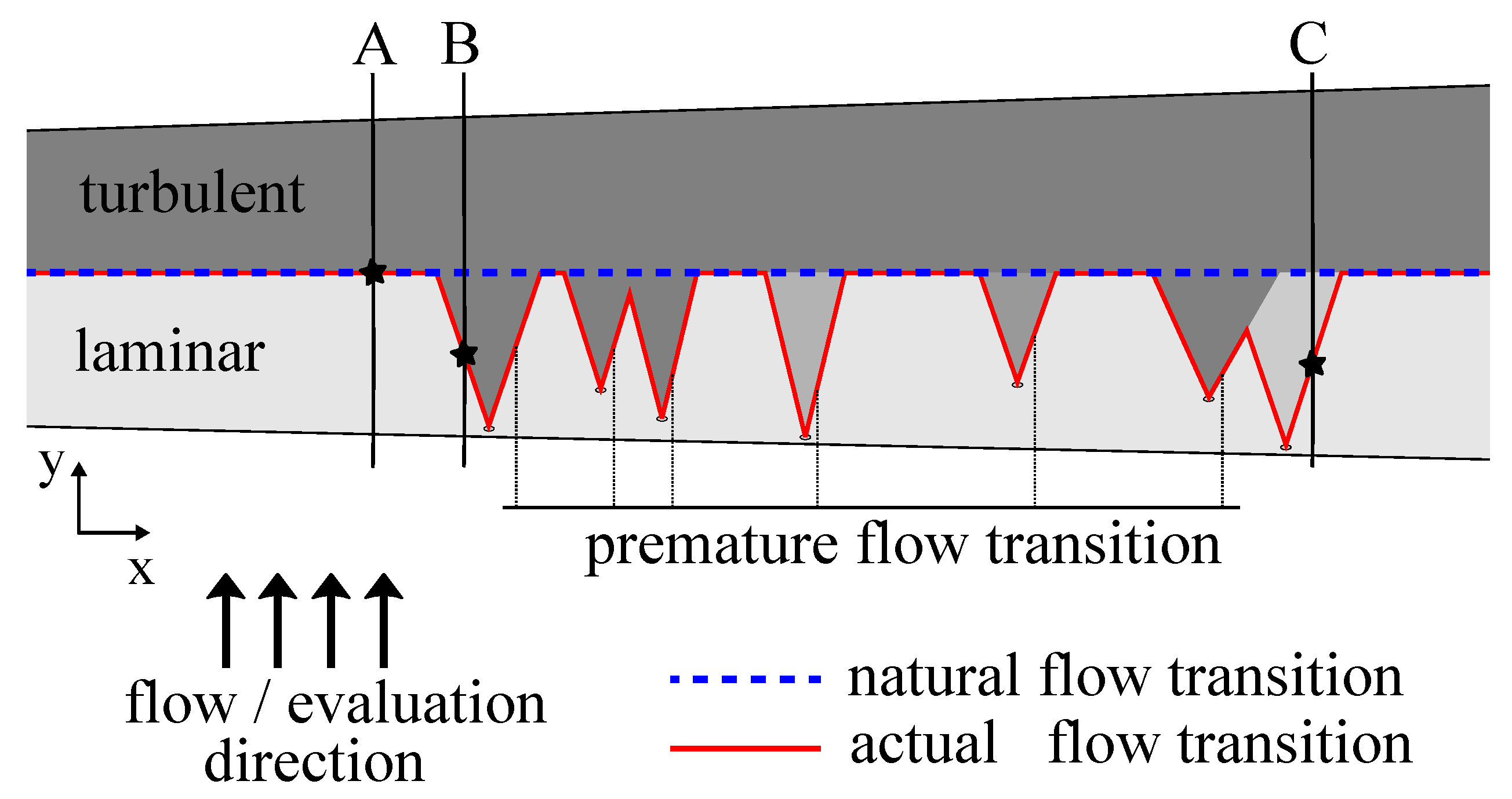
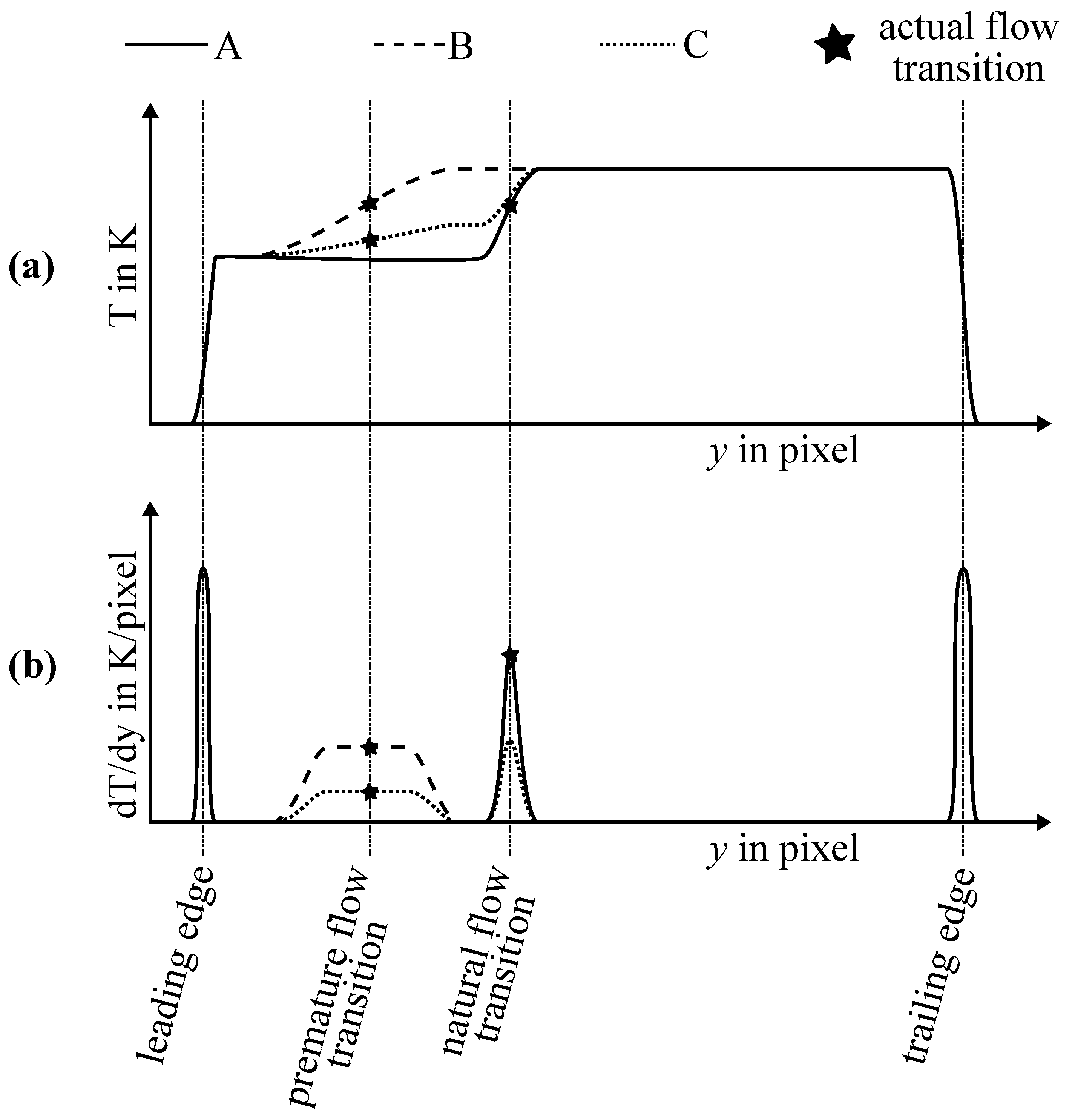
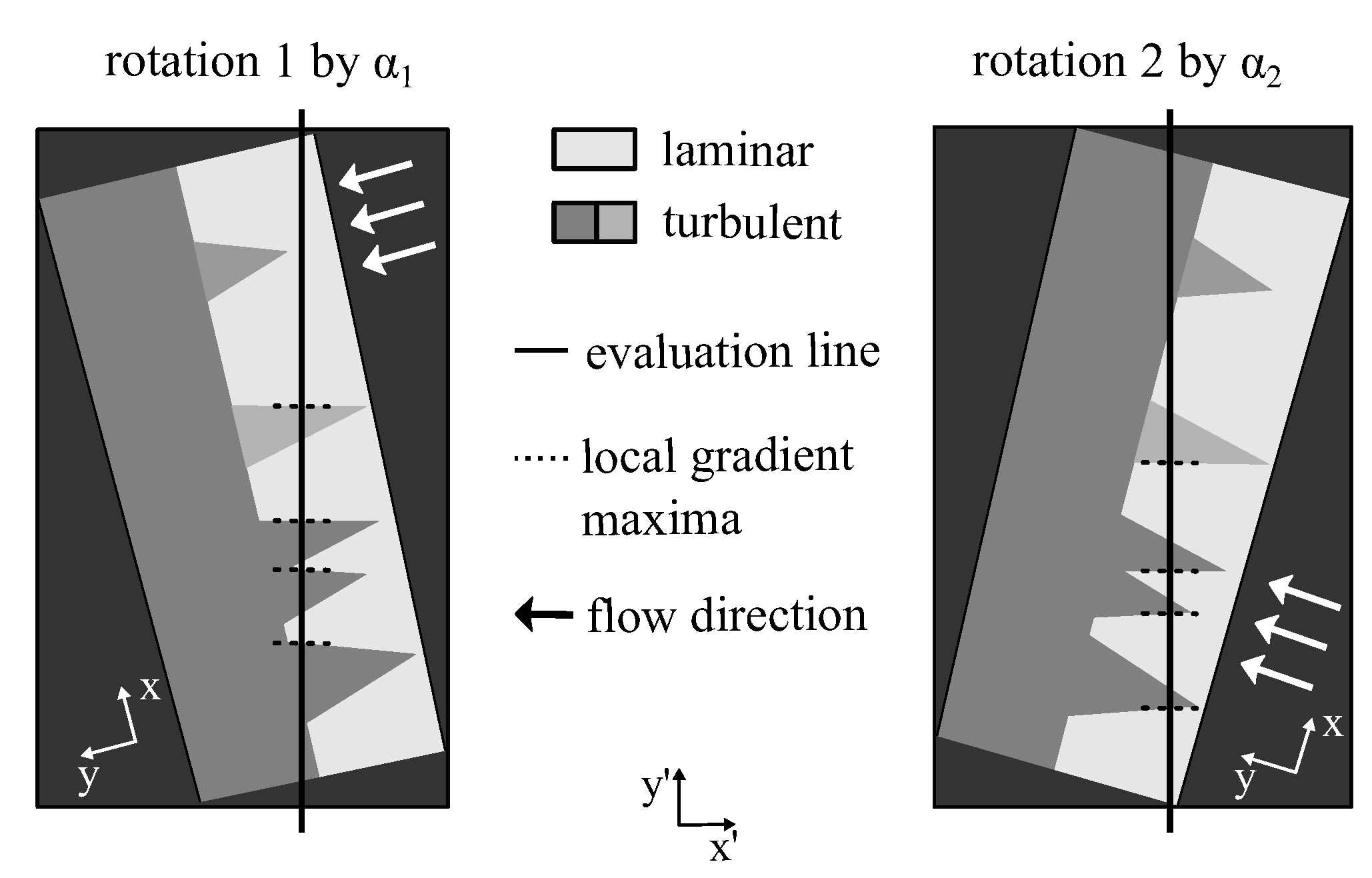
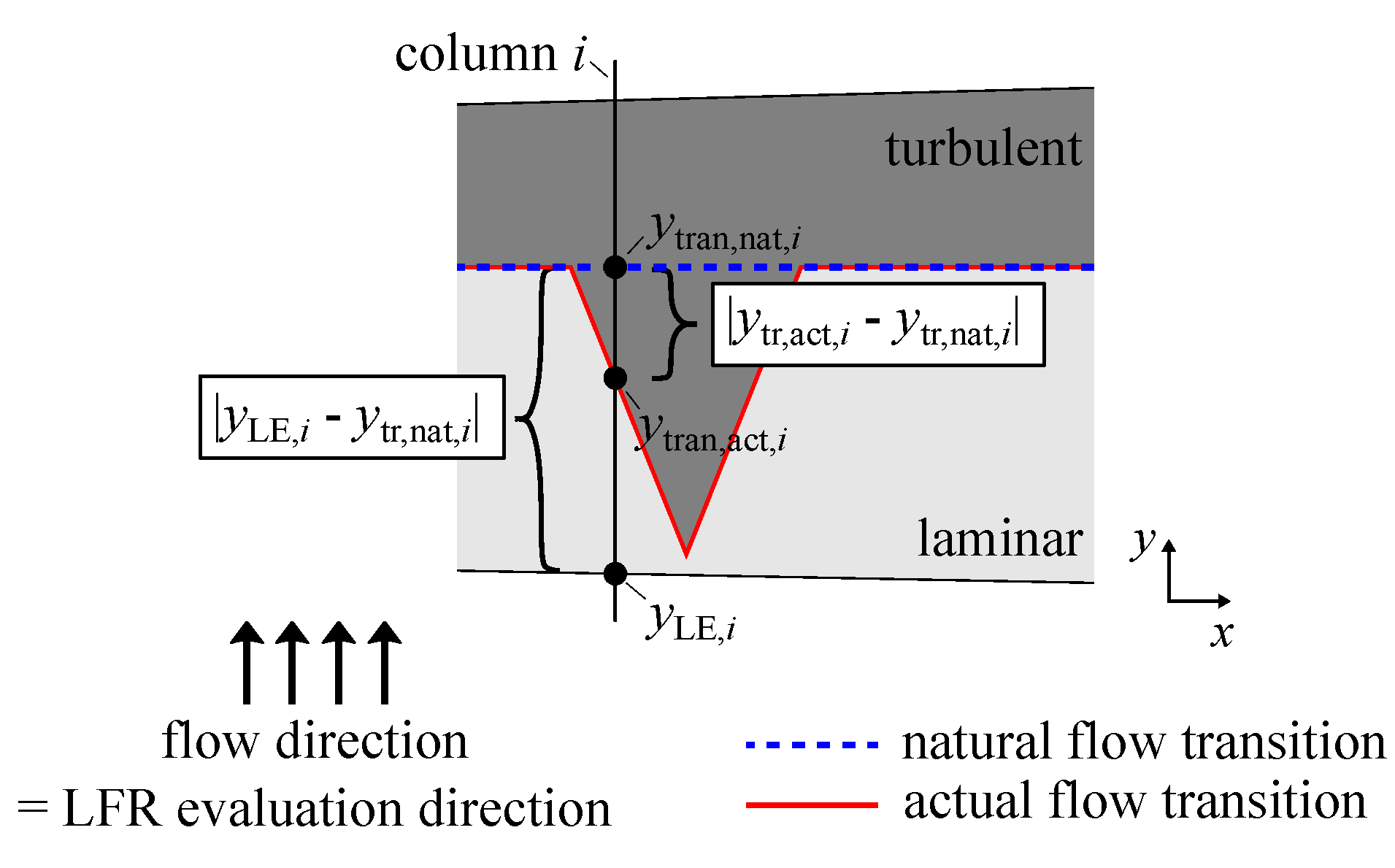
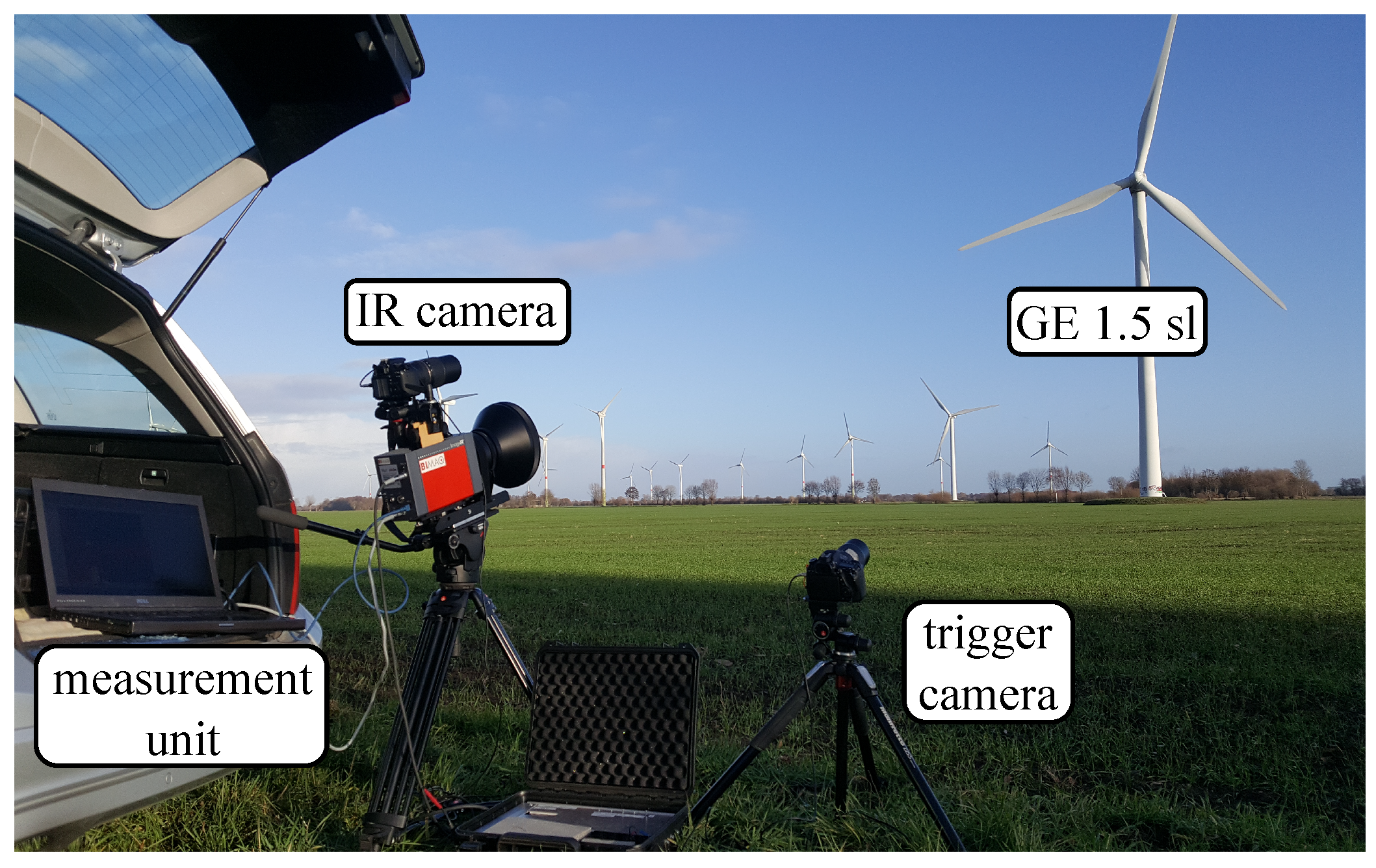
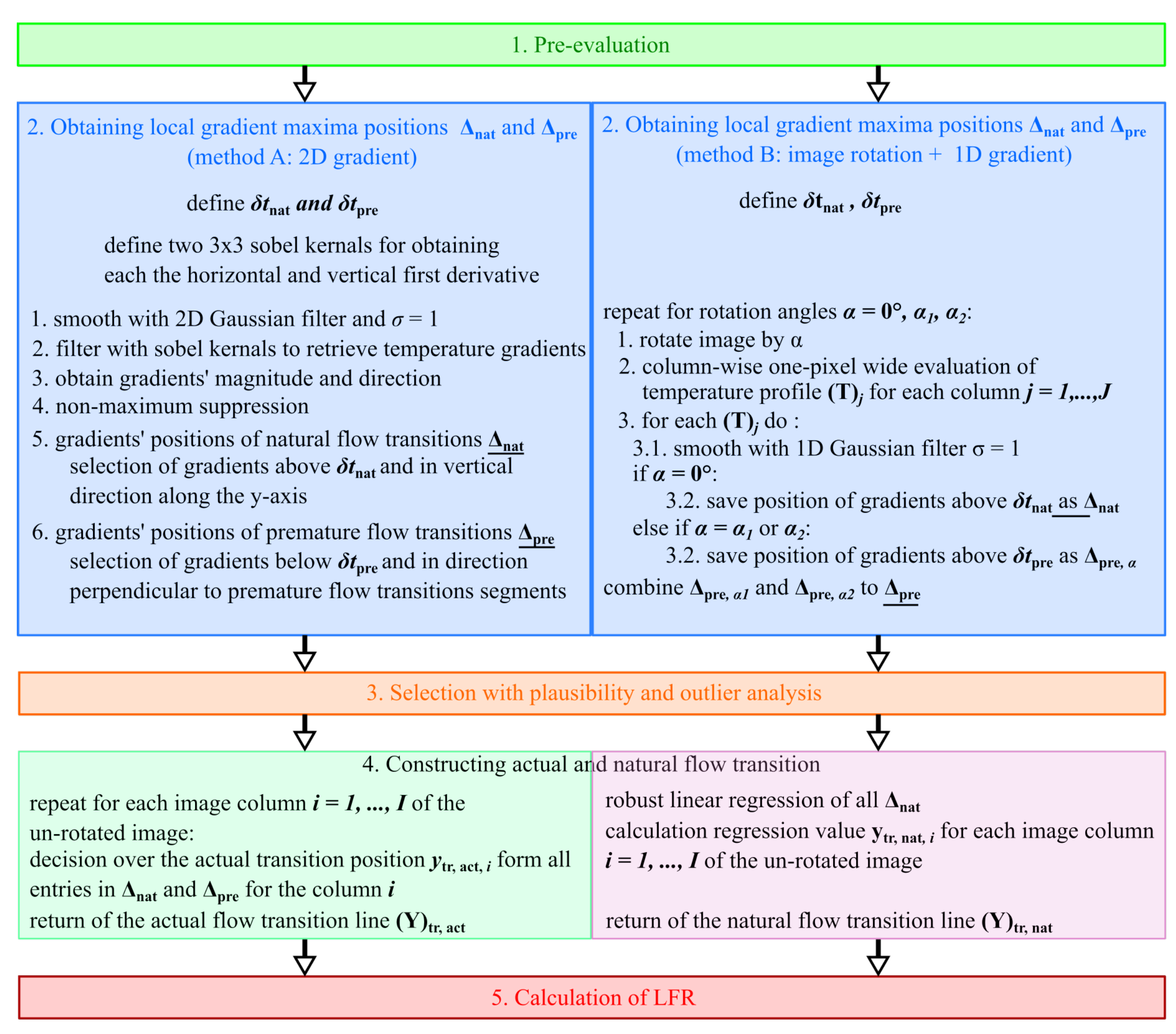
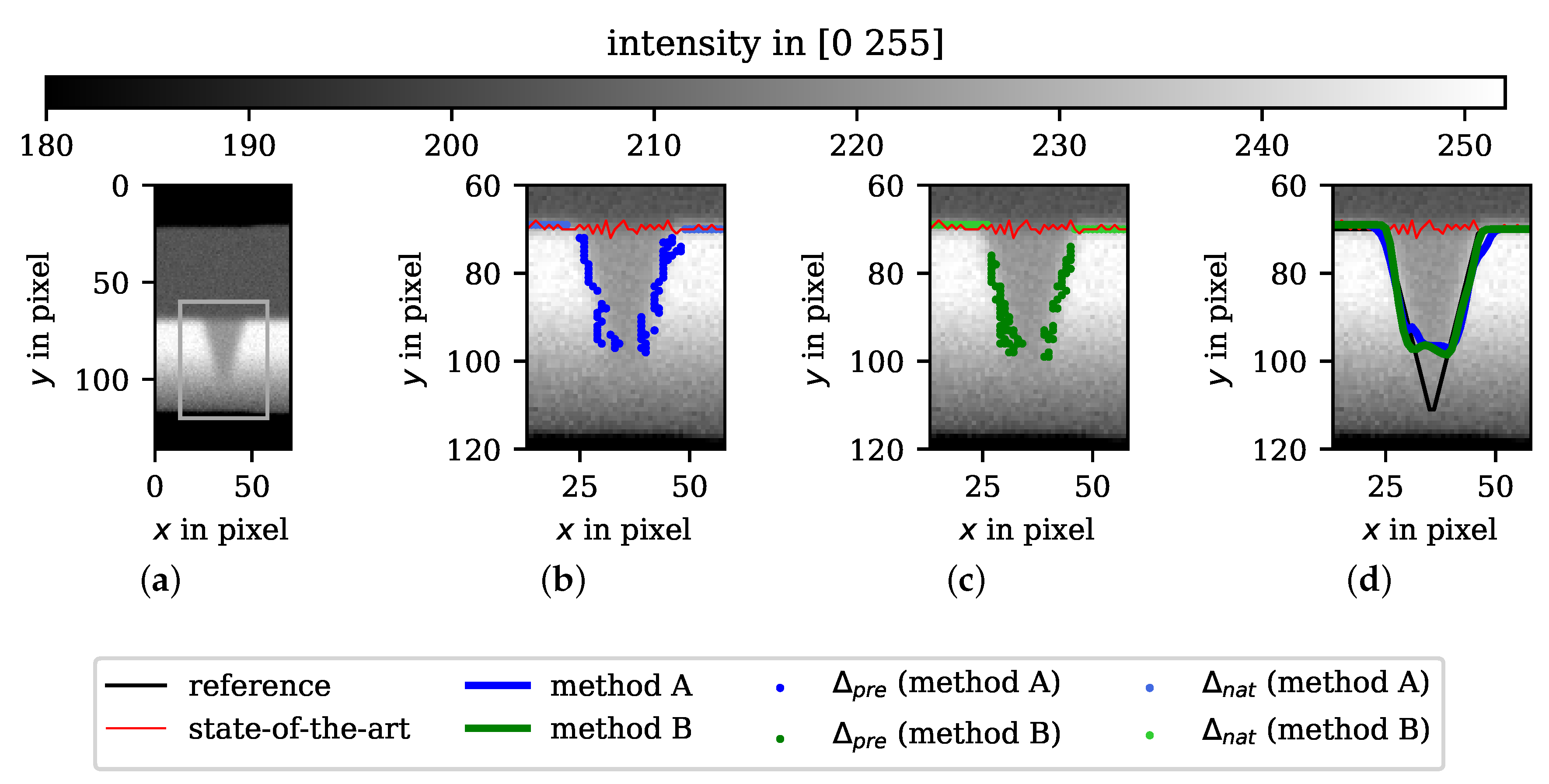
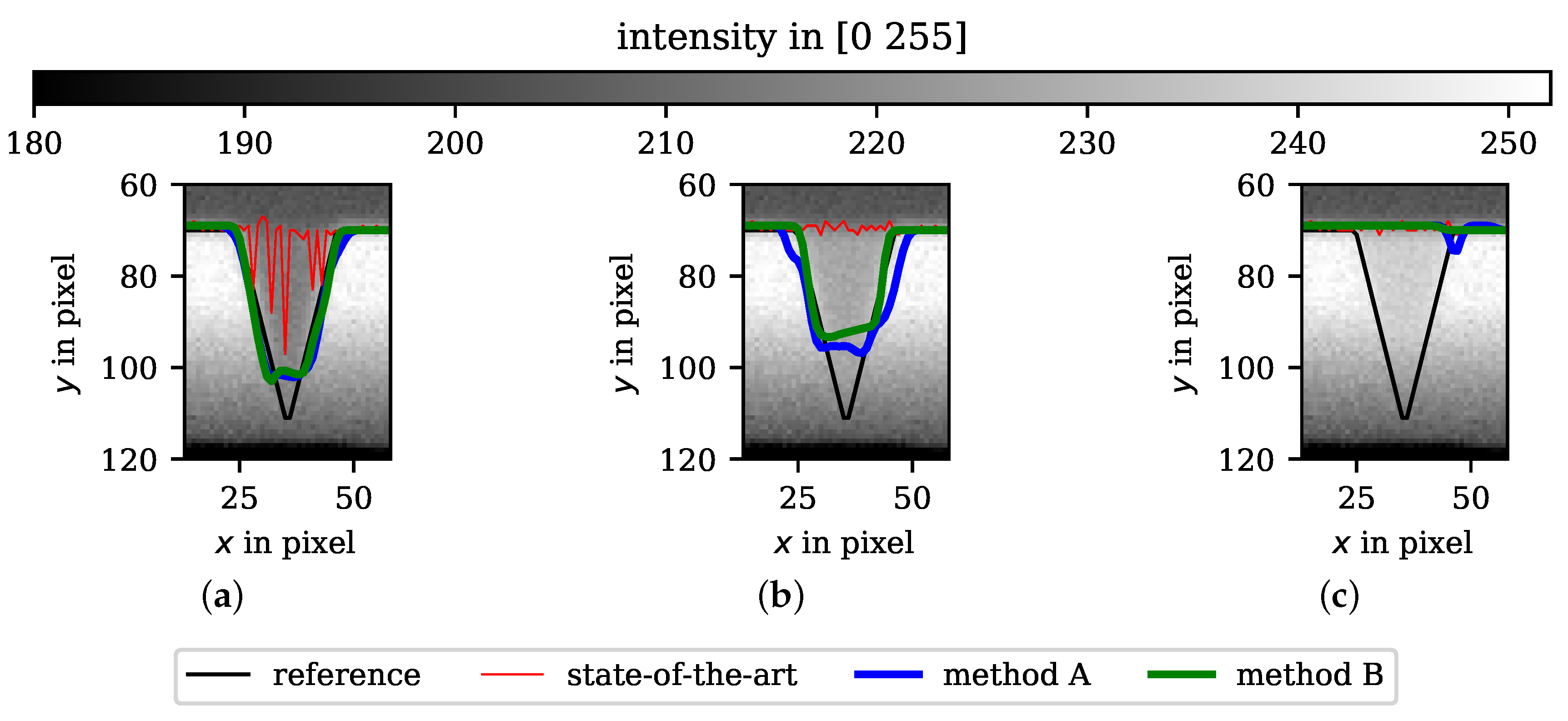


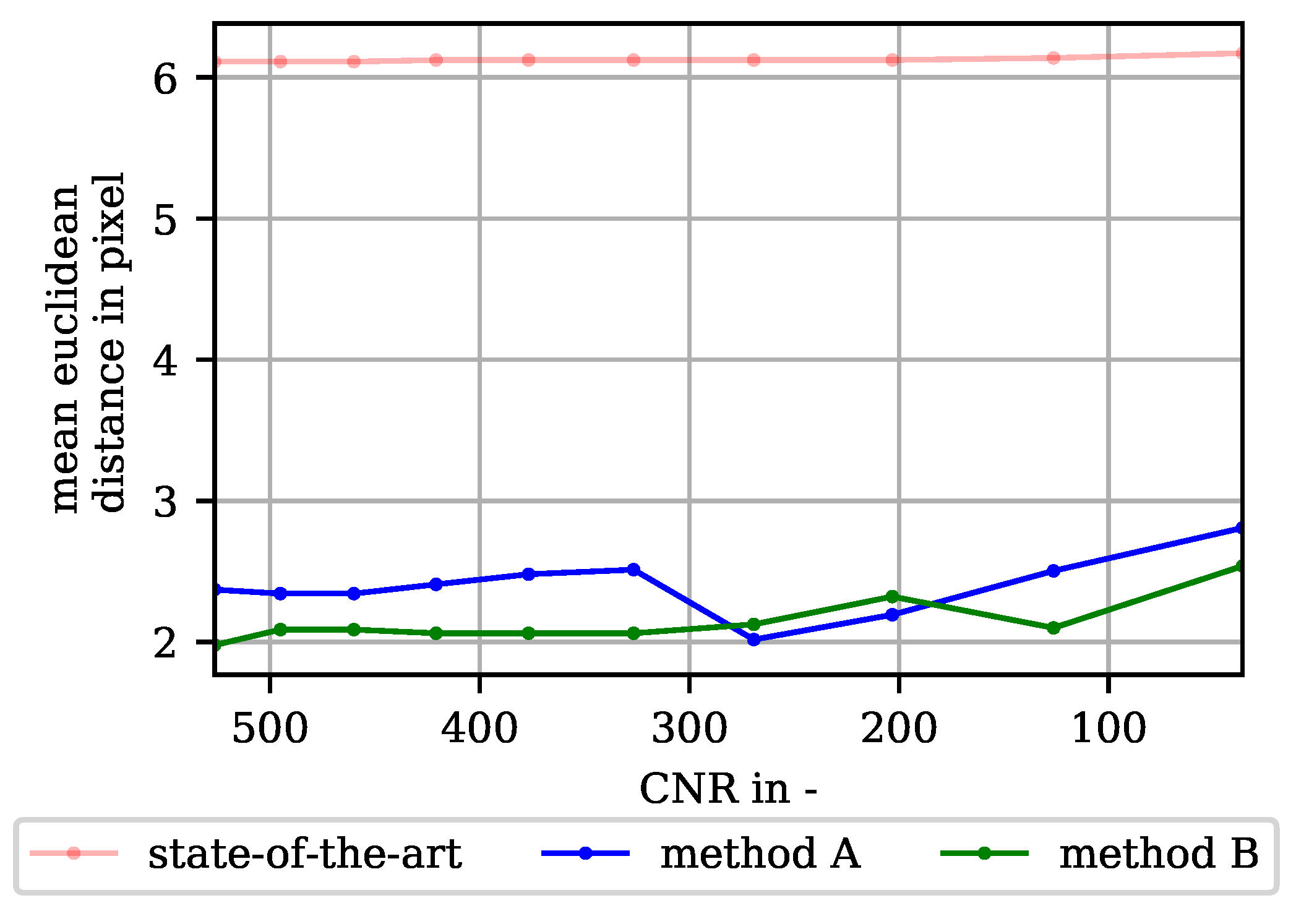
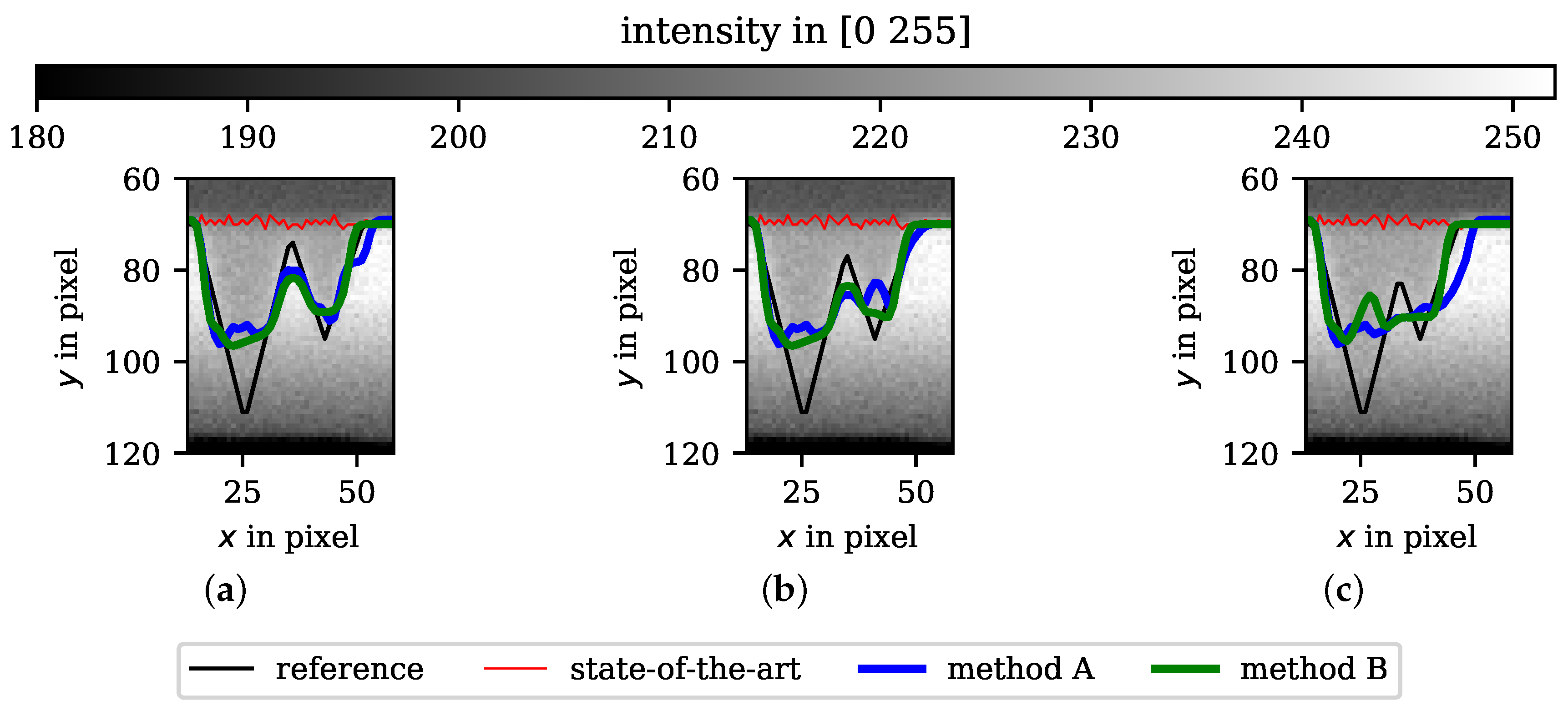
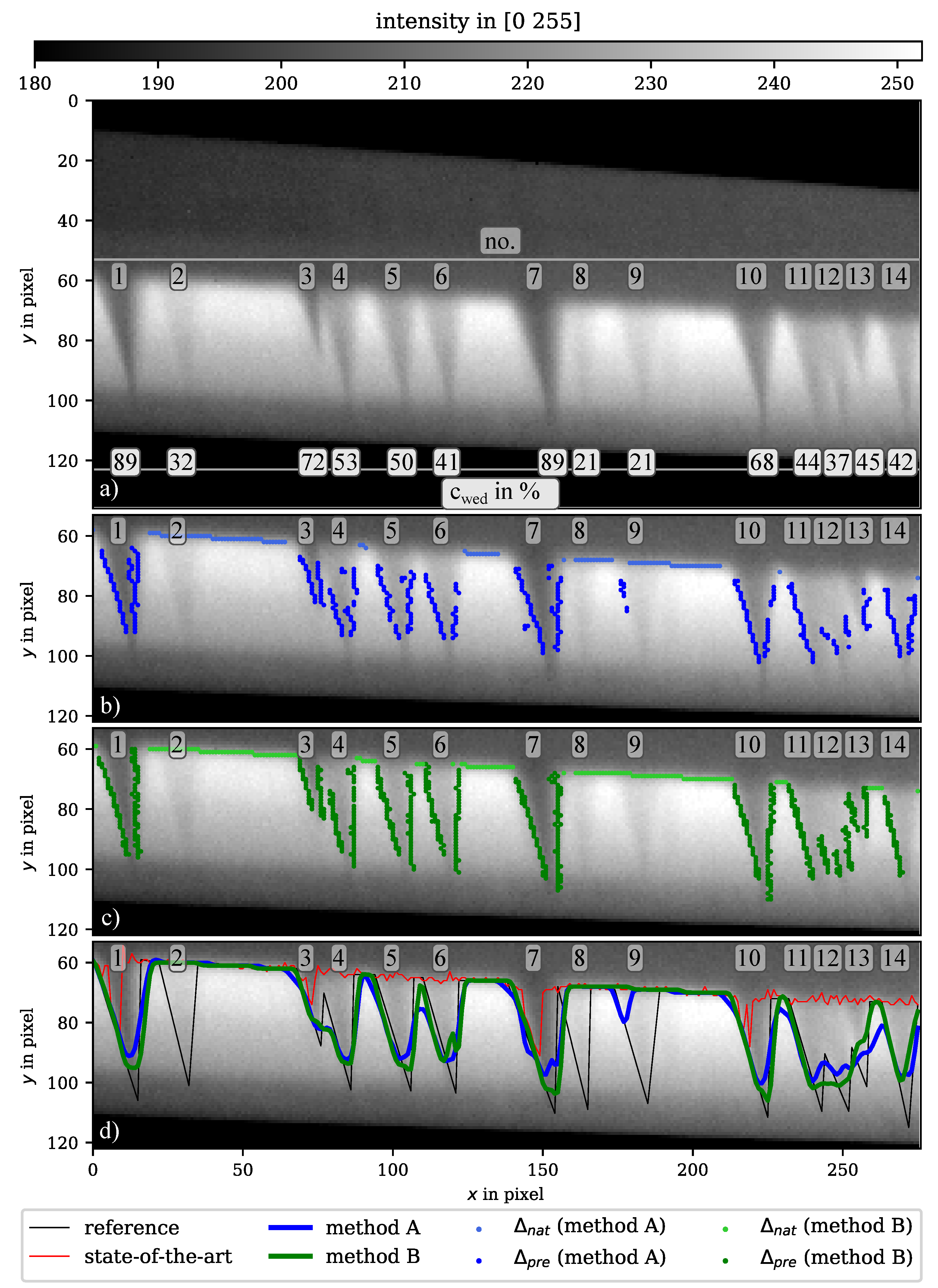
| Method A | Method B | |
|---|---|---|
| = |
© 2020 by the authors. Licensee MDPI, Basel, Switzerland. This article is an open access article distributed under the terms and conditions of the Creative Commons Attribution (CC BY) license (http://creativecommons.org/licenses/by/4.0/).
Share and Cite
Gleichauf, D.; Sorg, M.; Fischer, A. Contactless Localization of Premature Laminar–Turbulent Flow Transitions on Wind Turbine Rotor Blades in Operation. Appl. Sci. 2020, 10, 6552. https://doi.org/10.3390/app10186552
Gleichauf D, Sorg M, Fischer A. Contactless Localization of Premature Laminar–Turbulent Flow Transitions on Wind Turbine Rotor Blades in Operation. Applied Sciences. 2020; 10(18):6552. https://doi.org/10.3390/app10186552
Chicago/Turabian StyleGleichauf, Daniel, Michael Sorg, and Andreas Fischer. 2020. "Contactless Localization of Premature Laminar–Turbulent Flow Transitions on Wind Turbine Rotor Blades in Operation" Applied Sciences 10, no. 18: 6552. https://doi.org/10.3390/app10186552
APA StyleGleichauf, D., Sorg, M., & Fischer, A. (2020). Contactless Localization of Premature Laminar–Turbulent Flow Transitions on Wind Turbine Rotor Blades in Operation. Applied Sciences, 10(18), 6552. https://doi.org/10.3390/app10186552






